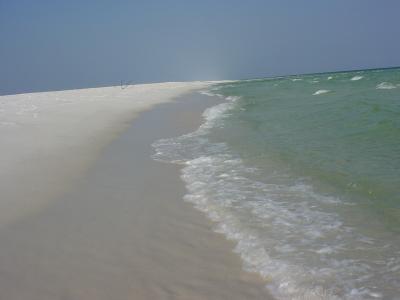The Sonoran Desert Conservation Plan: A Landscape-scale Conservation Initiative in Pima County, Arizona
Photo attributed to Sue in az. This work has been released into the public domain by its author. No endorsement by licensor implied.
Posted by
Brian PowellProject Summary
The Sonoran Desert Conservation Plan (SDCP) addresses long-term conservation needs of a full range of Pima County's natural and cultural resources. Many SDCP initiatives have been implemented, including a major update of the County’s Comprehensive Plan, land protection priorities, purchase and lease of open space, and ranch and cultural conservation. Although climate change was a minor part of the SDCP planning process, key conservation themes and targets that play such a crucial role in the climate change adaptation conversation (e.g., connectivity, representativeness, and refugia) were critical components of Pima County’s plan. Additionally, though a critical feature of the plan has been the conservation of over 200,000 acres of land, a less tangible but important outcome of the SDCP has been an integration of conservation themes into a broad range of County planning activities. As the anticipated effects of climate change become ever more alarming, Pima County is now in a stronger position to respond to these many challenges because of the SDCP.
Background
Pima County, Arizona is one of the fastest growing communities in the United States and is located in one of the most ecologically diverse areas of the country. In 1997, development activities were slowed as a result of the listing of the cactus ferruginous pygmy-owl (Glaucidium brasilianum cactorum) as a federally endangered species. This tiny owl became a catalyst for a landscape-level plan known as the Sonoran Desert Conservation Plan (SDCP). The development of the SDCP has been an iterative process whereby planning tools were developed using science-based principles, shaped by public input and review, and subsequently refined into proposals that reflect community values.
Implementation
The SDCP was developed with full participation from a wide range of stakeholders. A Steering Committee was assembled in 1999 to chart the process for development of the SDCP and included representatives from the business community, environmental organizations, city and county governments, state agencies, and ranching and mining communities. The Science Technical Advisory Team (STAT) played a critical role in the development of the plan, first by articulating the biological goal for the SDCP: to ensure the long-term survival of the full spectrum of plants and animals that are indigenous to Pima County through maintaining or improving the habitat conditions and ecosystem functions necessary for their survival.
The STAT then directed the development of tools that were used to indentify areas of high biological diversity, critical landscape connections, and refugia for key species. These tools were then used to inform the County’s land-use planning guidelines, which—among other things—sought to direct growth away from areas of high biological diversity and provide corridors for species movement. These planning tools were also used to identify properties for acquisition, a process which began in earnest after the community’s passage of a $174 million bond measure for the purchase and lease of open space. Since the passage of the bond in 2004, Pima County has bought approximately 46,000 acres and leased 127,000 acres.
Outcomes and Conclusions
The SDCP continues to be implemented and refined through activities such as further land acquisitions, and may include further regulatory mechanisms to encourage development away from ecologically sensitive areas. Although these are undoubtedly positive conservation measures, the long-term health of these lands will be impaired by a host of factors, with climate change being among the top-ranked challenges. The long-term nature of the challenges imposed by climate change and its uncertainties will require that Pima County, as land managers, adopt adaptive management strategies that foster flexibility, transparency in decision processes, and a reliance on science and collaboration to solve problems.
Citation
Powell, B. and R.M. Gregg (2010). The Sonoran Desert Conservation Plan: A Landscape-scale Conservation Initiative in Pima County, Arizona [Case study on a project of Pima County, Arizona]. Retrieved from CAKE: www.cakex.org/case-studies/sonoran-desert-conservation-plan-landscape-s… (Last updated September 2010)


